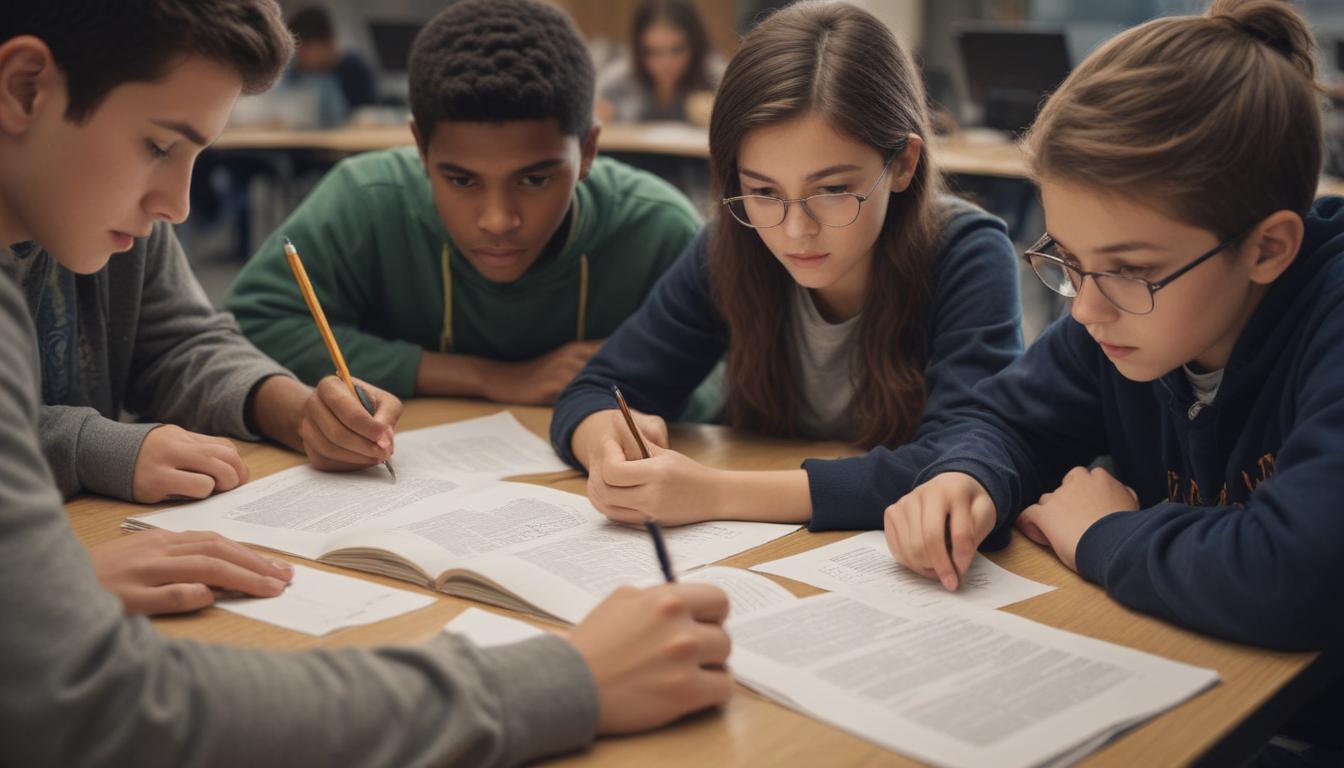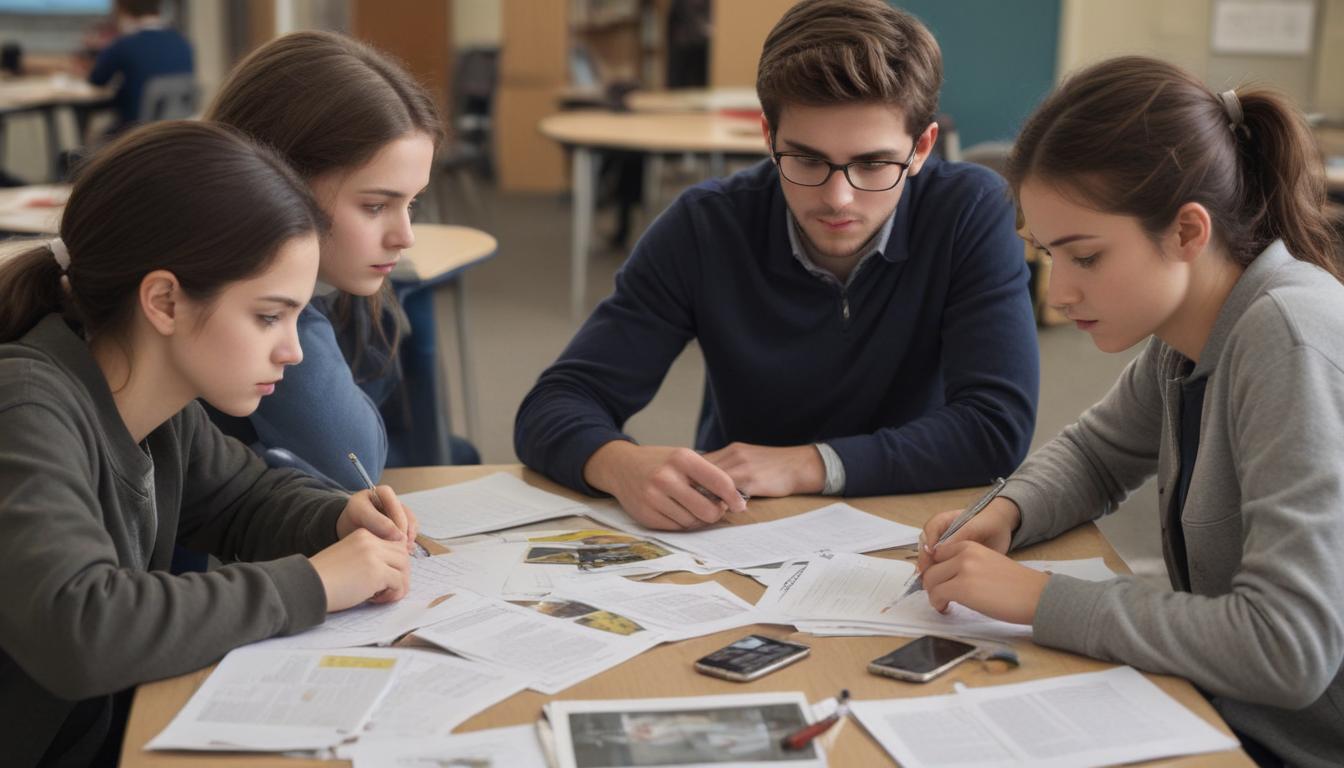Now Reading: The Power of Collaborative Learning
- 01
The Power of Collaborative Learning
The Power of Collaborative Learning

More Than Just Group Work Unlocking the True Benefits of Collaborative Learning
Have you ever found yourself staring at a page in a textbook, reading the same paragraph over and over, yet feeling like nothing is sinking in? The isolation of solo studying can be frustrating and inefficient, leading to mental blocks that seem impossible to overcome. You know the information is there, but you just can’t connect with it. What if the solution wasn’t to study harder, but to study smarter by tapping into the power of a shared mind?
This is where collaborative learning transforms from a simple classroom activity into a powerful tool for personal and professional growth. It’s about moving beyond the idea of “group projects” and embracing a dynamic process where individuals actively engage with each other to explore concepts, solve problems, and construct new knowledge together. By working with others, you can break through those learning plateaus, gain fresh perspectives, and develop skills that last a lifetime.
Boost Your Understanding and Retention
One of the most significant advantages of collaborative learning is its direct impact on how well you understand and remember information. When you learn alone, it’s often a passive process of absorbing facts. But when you work with a group, learning becomes an active, engaging experience. The simple act of explaining a concept to a peer forces you to process the information on a much deeper level, organize your thoughts clearly, and identify any gaps in your own knowledge. This process, often called the protégé effect, is one of the most effective ways to solidify information in your long term memory.
Furthermore, a collaborative environment exposes you to a rich diversity of perspectives. A peer might interpret a problem or a piece of text in a way you had never considered, instantly illuminating a difficult concept. This collective brainstorming challenges your assumptions and pushes you beyond a single, linear way of thinking. Your group members can help fill in the gaps in your understanding, and you can do the same for them, creating a more complete and robust knowledge base for everyone involved. The result is not just memorization, but true comprehension.
Develop Essential Skills for the Future
In today’s interconnected world, technical knowledge alone is not enough to succeed. Employers are increasingly looking for candidates with strong “soft skills,” and collaborative learning is one of the best training grounds for developing them. When you work in a team, you are constantly practicing the art of communication. You learn how to articulate your ideas with clarity and confidence, listen actively to the input of others, and provide constructive feedback in a respectful manner. These skills are invaluable in any career path.
Beyond communication, you build a foundation in teamwork, leadership, and conflict resolution. Navigating group dynamics teaches you how to negotiate, compromise, and work towards a shared objective, even when opinions differ. You learn when to step up and lead a discussion and when to step back and support a teammate. Inevitably, disagreements will arise, and a collaborative setting provides a low stakes environment to practice resolving those conflicts constructively. These experiences build emotional intelligence and resilience, preparing you for the complex, team based challenges of the modern workplace.

Making Collaboration Work for You
We have all experienced “group work” that felt inefficient or unbalanced, where one person did all the work while others coasted. True collaborative learning, however, is not a matter of chance; it is a product of good structure and a positive environment. To avoid the common pitfalls, it is crucial to approach collaboration with intention and a clear framework. This ensures that everyone contributes, everyone is accountable, and the group’s collective energy is channeled productively towards the learning goal.
Turning a potentially chaotic group session into a powerhouse of learning requires a few key principles. By establishing a clear purpose and fostering an atmosphere of trust and open communication, you can create an environment where everyone feels empowered to participate fully. These strategies transform a simple group of individuals into a cohesive and effective learning team.
Establish Clear Goals and Roles
The first step to successful collaboration is ensuring everyone is on the same page. Before diving in, the group must define a specific, shared objective. What are you trying to accomplish together? Is it to solve a specific set of problems, understand a complex chapter, or prepare a presentation? A clear goal acts as a compass, keeping the group focused and preventing discussions from veering off track.
Once the goal is set, assigning or agreeing upon roles can ensure balanced participation and accountability. This doesn’t need to be overly formal, but having a designated facilitator to keep the conversation moving, a note taker to capture key ideas, and a timekeeper to manage the schedule can dramatically improve efficiency. This division of labor prevents the common problem of one person shouldering the entire burden and encourages each member to take ownership of their contribution to the group’s success.
Foster a Culture of Open Communication
The true magic of collaboration happens when individuals feel safe enough to share their ideas freely, ask questions without fear of judgment, and challenge concepts respectfully. This requires building a culture of psychological safety, where every voice is valued. Encourage group members to ask “why” and to propose unconventional ideas. Some of the greatest breakthroughs come from a question or idea that initially seems “silly” but opens up a new avenue of thought.
To build this culture, practice active listening. When a teammate is speaking, focus on understanding their point before formulating your response. A great technique is to paraphrase what they said (“So, if I understand correctly, you’re saying that…”) to confirm your understanding. Set ground rules that emphasize critiquing ideas, not people. By creating a space built on respect and curiosity, you unlock the full creative and problem solving potential of the group.
Embrace the Power of We
Ultimately, collaborative learning is more than just a study technique; it is a mindset that recognizes the immense value of collective intelligence. It enriches your understanding, equips you with the essential skills needed to thrive in any environment, and fosters personal growth by teaching you how to work effectively with others. The benefits extend far beyond the classroom or the office, shaping you into a more effective communicator, a more creative problem solver, and a more engaged thinker.
So, the next time you feel stuck learning on your own, consider reaching out. Step out of the silo and into a shared space of inquiry and discovery. Form a study group, initiate a brainstorming session with colleagues, or simply ask someone for their perspective. You will likely find that the solution you were looking for, and the next breakthrough in your understanding, is found not in isolation, but in the dynamic and powerful space between minds.



































